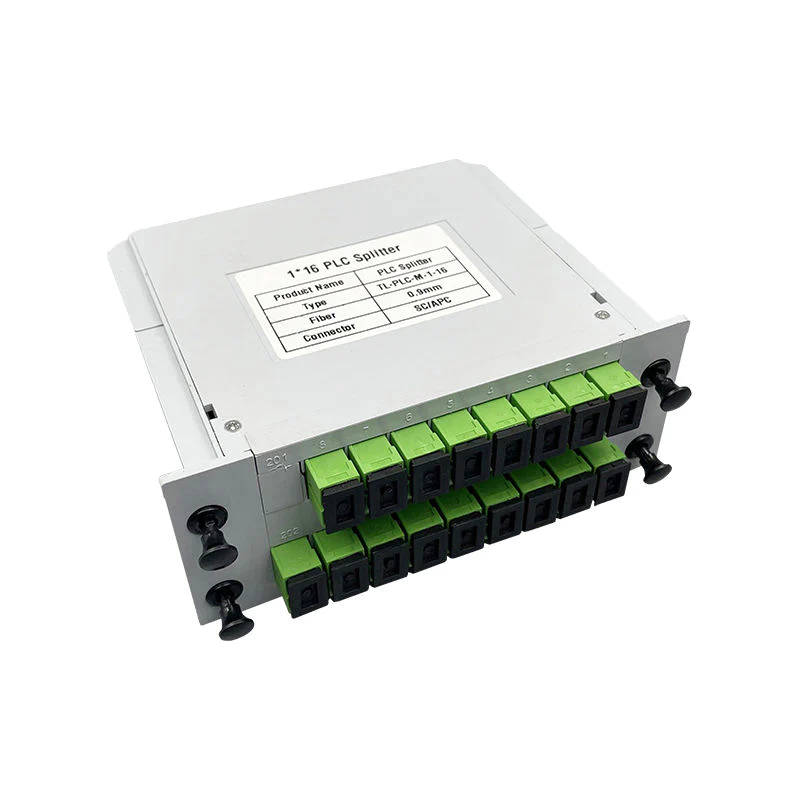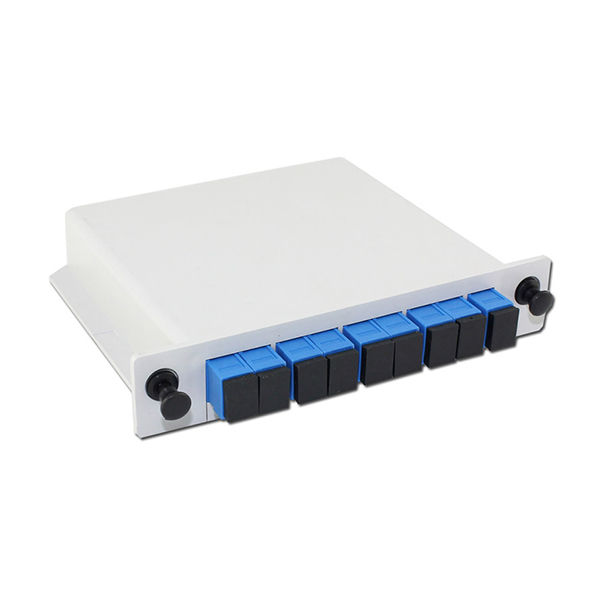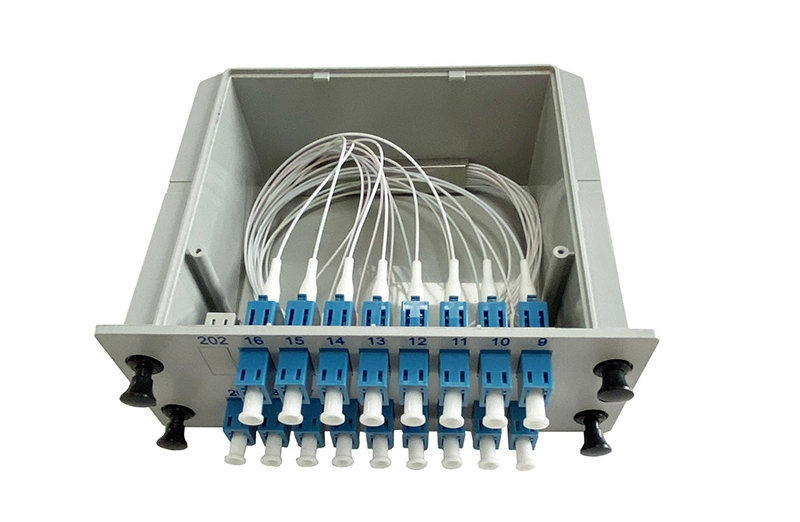Optimizing Signal Transmission with Cassette Module and PLC Splitter

Enhancing Signal Transmission
Basics of Fiber Optic Networks
Fiber optic networks are the backbone of modern communication, enabling the high-speed transmission of data over long distances. The key components of fiber optic networks include optical fibers, transmitters, receivers, and amplifiers. These networks utilize light signals to transmit data, offering significant advantages over traditional copper wire systems. The structure of a fiber optic network consists of a core, cladding, and buffer coating to protect the delicate fibers. Understanding the basics of fiber optic networks is crucial for optimizing signal transmission and improving network performance.
Advantages of Fiber Optic Networks
One of the primary advantages of fiber optic networks is their high-speed data transmission capabilities. They can carry large amounts of data over long distances with minimal signal loss. Additionally, fiber optic networks offer enhanced reliability and security due to their immunity to electromagnetic interference and hacking attempts. These characteristics make fiber optic networks essential for various applications, including telecommunication, internet services, and enterprise networking.
Role of Cassette Module
The cassette module plays a vital role in organizing and managing fiber optic cables within network infrastructure. It provides a secure housing for fiber optic cassettes, ensuring proper protection and organization of the optical fibers. There are different types and variations of cassette modules available to accommodate specific network requirements, making them versatile components in signal transmission optimization.
Understanding PLC Splitter
A PLC splitter is an essential component that divides or combines optical signals in passive optical networks (PON). It efficiently distributes signals from a single input port to multiple output ports or vice versa without requiring power. PLC splitters find extensive applications in various network architectures, contributing to efficient signal transmission across different network segments.
Importance of Terminal Box
Terminal boxes serve as crucial points for connecting incoming and outgoing optical fibers within a network infrastructure. They provide protection and organization for fiber splicing and distribution points, contributing to improved network performance by minimizing signal loss and ensuring reliable connectivity.
Ensuring Network Reliability
Maintaining the integrity of fiber optic networks is essential for ensuring reliable signal transmission. Implementing best practices such as proper cable management, regular inspections, and adherence to industry standards significantly contribute to network reliability while minimizing signal loss.

Understanding Fiber Optic Networks
Basics of Fiber Optic Networks
Fiber optic networks operate on the principle of utilizing light signals to transmit data, offering a highly efficient and reliable communication medium. The key components of fiber optic networks include optical fibers, transmitters, receivers, and amplifiers. These networks are structured with a core, cladding, and buffer coating to protect the delicate fibers from external environmental factors. Understanding the fundamentals of fiber optic communication is essential for grasping the intricate process of high-speed data transmission over long distances.
Advantages of Fiber Optic Networks
The primary advantage of fiber optic networks lies in their unparalleled high-speed data transmission capabilities. Optical fibers can carry large volumes of data over extensive distances with minimal signal loss, surpassing the performance of traditional copper wire systems. Moreover, these networks offer enhanced reliability and security due to their immunity to electromagnetic interference and resistance to unauthorized access or hacking attempts. The reliability and security features make fiber optic networks indispensable for various critical applications such as telecommunication, internet services, and enterprise networking.
Components for Signal Transmission
Role of Cassette Module
The cassette module plays a crucial role in facilitating efficient signal transmission within fiber optic networks. Its primary functionality lies in providing a secure and organized housing for fiber optic cassettes, ensuring the protection and management of optical fibers. By offering a dedicated space for cassettes, it simplifies the process of routing and organizing fibers, contributing to the overall optimization of signal transmission.
There are various types and variations of cassette modules available to cater to specific network requirements. These variations include different configurations for accommodating diverse fiber counts and connector types. Additionally, some cassette modules feature sliding trays or removable lids for convenient access during installation and maintenance activities. The versatility of cassette modules makes them essential components in optimizing signal transmission across different network architectures.
Understanding PLC Splitter
A PLC splitter, also known as a planar lightwave circuit splitter, is designed to divide and distribute optical signals efficiently within network infrastructure. It operates based on a passive mechanism, requiring no power source for its functionality. The PLC splitter finds extensive applications in various network architectures, including passive optical networks (PON) and fiber-to-the-home (FTTH) deployments.
The primary benefit of using a PLC splitter lies in its ability to split optical signals from a single input port into multiple output ports or combine signals from multiple input ports into a single output port without experiencing significant signal loss. This capability enhances the flexibility and scalability of network designs while maintaining high-quality signal transmission across different segments of the network infrastructure.
The PLC splitter's compact size and reliability make it an indispensable component for optimizing signal transmission in fiber optic networks, contributing to improved network performance and efficiency.
Improving Network Performance
Optimizing Signal Transmission
Enhancing signal transmission in fiber optic networks is essential for maximizing data transmission efficiency. Implementing proper cable management practices, such as organizing and securing optical fibers within the cassette modules, significantly contributes to minimizing signal loss and ensuring reliable signal transmission. Additionally, optimizing the routing of fibers using cassette modules and PLC splitters helps maintain signal integrity throughout the network infrastructure.
Another strategy for enhancing signal transmission involves regular inspections and maintenance activities to identify and address any potential issues that could impact data transmission. By ensuring that all components, including cassette modules, PLC splitters, and terminal boxes, are functioning optimally, network operators can uphold high-quality data transmission capabilities.
The role of the terminal box in improving network performance cannot be understated. Terminal boxes provide a centralized point for managing incoming and outgoing optical fibers, contributing to efficient signal reception across different segments of the network. Properly organized fiber splicing and distribution points within the terminal box enhance network reliability by minimizing signal loss and maintaining consistent data transmission quality.
Ensuring Network Reliability
Maintaining network integrity is crucial for ensuring reliable signal reception and minimizing potential disruptions in data transmission. Implementing best practices such as regular inspections, adherence to industry standards, and proactive identification of potential issues contribute to overall network reliability. By prioritizing these measures, network operators can minimize downtime and ensure seamless data transmission operations.
Adhering to industry standards regarding component installation, cable management, and environmental factors is paramount for sustaining high levels of network reliability. Additionally, implementing robust security measures to safeguard against unauthorized access or tampering further enhances the overall integrity of the fiber optic network.
These strategies collectively contribute to optimal signal transmission and sustained network reliability in fiber optic communication infrastructure.

Enhancing Signal Transmission
Importance of Signal Transmission Optimization
Efficient signal transmission is paramount in telecommunication infrastructure, ensuring seamless data flow and network reliability. The synergy of the cassette module, PLC splitter, and terminal box plays a pivotal role in enhancing network performance. Understanding and implementing signal transmission optimization strategies are crucial for maintaining efficient network operations and minimizing potential disruptions. By prioritizing the optimization of cassette modules and associated components, network operators can uphold high-quality data transmission capabilities, ultimately contributing to the overall efficiency of the telecommunication infrastructure.
See Also
Understanding HDMI Connectivity: A Guide to Optical and Electrical Conversion
Exploring the Benefits of Using LSZH Material in Figure Eight Drop Cables for FTTH Applications
Understanding the Applications of Zipcord Cable in Fiber Optic Networks
Maximizing Benefits of Using Singlemode and Multimode Black Cables for Outdoor Applications
Maximizing Cost-Effectiveness with Quick Assembly Connectors for Round Drop Cables
About US
Follow Us
AnetFiber company's main products are indoor and outdoor optical fiber cables, outdoor waterproof pre-connected fiber-to-the-home products, PLC optical fiber splitters, optical fiber jumpers and pigtails, MTP®/MPO high-density big data product solutions, optical fiber field quick connectors and research and development molding, injection molding and production of optical fiber distribution boxes, optical fiber chassis cabinets, the market has expanded to the world, Europe, America, Asia, the Middle East and Latin America.
Address
Shenzhen City, Baoan District, Yanluo Street, Tangxiayong Community, Yangyong Industrial Road, Tonggangda New Energy Vehicle Park 406
Contacts
+86 199 2655 3586

